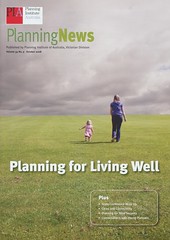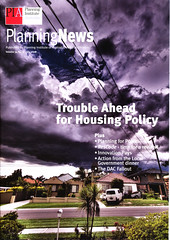Originally published as an editorial under a joint by line with Tim Westcott and Gilda Di Vincenzo in Planning News 34, no. 10 (November 2008): 4.
In last month’s Planning News, Tim Biles made a call for reform from within (“Reflections on Reform School”). Citing the unhappy experience of friends who had been trying to get a simple renovation through Council, he queried whether “the rule book and its policies have become the refuge of the faint hearted,” and made the following call for change:
Is there something simple you could do to make our planning system more effective? To put a smile and not a snarl on the face of the constituents we are meant to serve? Is it possible that this change, the ideas for reform, could well up from the bottom rather than be left to others at the top?
We salute, and heartily endorse, Biles’ call for self-examination in the profession. Yet we would add one major qualifier to his comments. Because Biles writes as one of the state’s most longstanding and respected private consultants, and frames his comments in the context of an account of the difficulties dealing with an unnamed Council, these comments could be seen as a call from one side of the profession to the other to lift their game. That’s an impression we think should be dispelled. There is no point in advocating for introspection if that becomes call for others to take a good look at themselves.
Continue reading →




